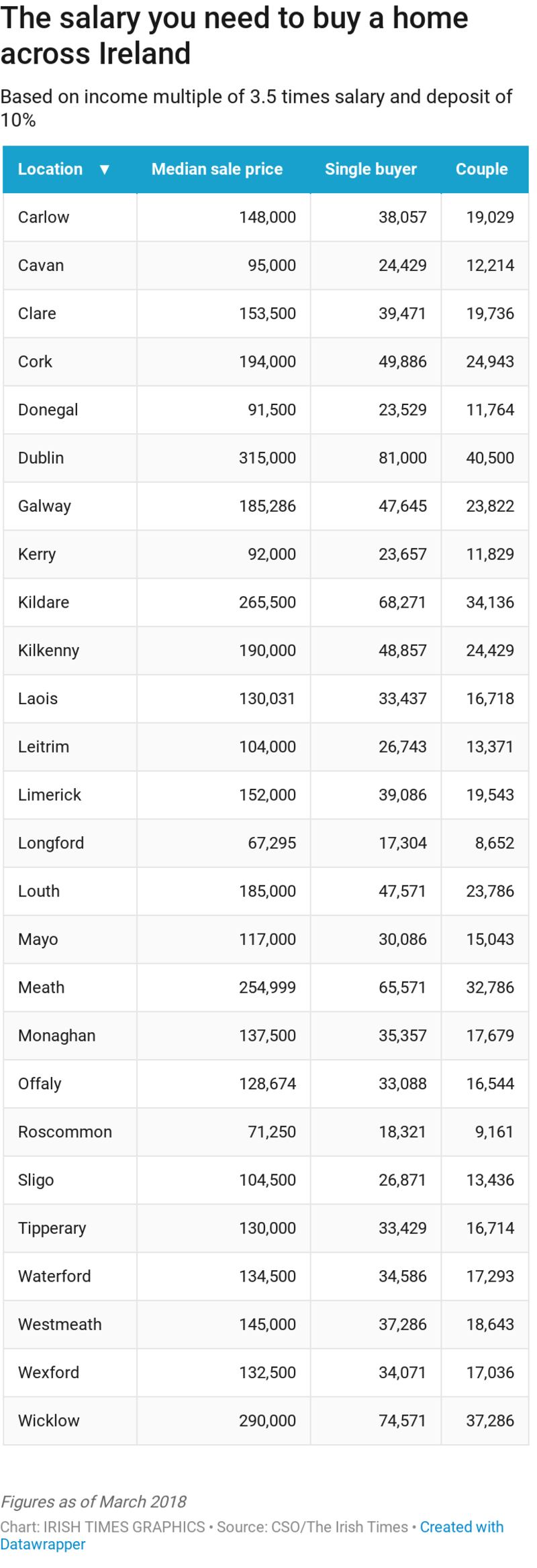If you’re not a professional earning more than €150,000 a year, you can forget about buying the typical house in an area like Blackrock or Ranelagh in Dublin, with rising house prices continuing to stretch affordability.
On the other hand, if you’re working on the checkout or in a shop earning the minimum wage in a county like Longford or Roscommon, provided you can save a deposit, you’ll be able to purchase your own home.
As our survey of the salary required to buy a home across the country shows, a single person living in Co Longford needs a salary of just €17,304 – or €8,652 if they’re part of a couple– to purchase the typical, or “median” priced home in the county. Someone in Blackrock, south county Dublin, on the other hand, needs to be earning a staggering €165,857 a year just to buy the typically priced house in that area, illustrating a vast difference between average house prices across the country.

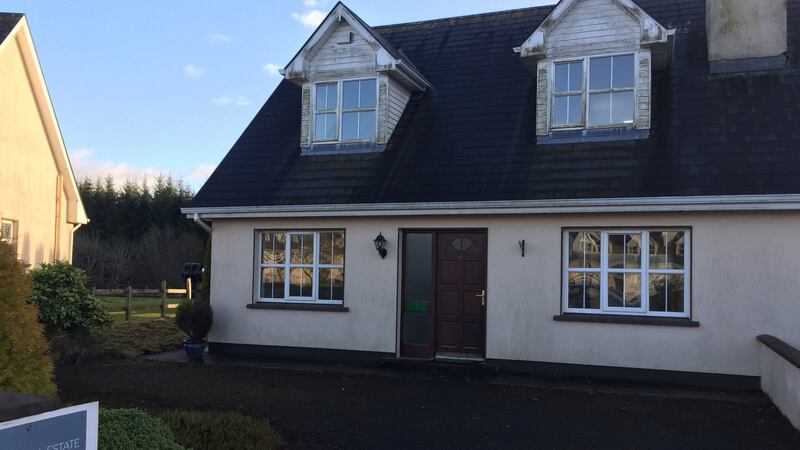
And Longford is not the only county where a minimum wage is enough to fulfil the dream of home ownership; the same is true in Roscommon. Back in the capital however, Balbriggan emerges as the most affordable area, while the salary needed to purchase the typical home in Blackrock has doubled since 2012.
Figures are based on the “median”, or the middle sales price according to figures compiled by the Central Statistics Office (CSO) for March 2018. To arrive at the salary needed to reach a specific purchase price, 10 per cent (first time buyer deposit requirement) is subtracted from the median price, with the remaining figure divided by 3.5, as per Central Bank rules on the multiple of income an individual can borrow. While some buyers will be entitled to an exemption on the income multiple rule, the 3.5 times rule applies to most purchasers.
The “discount” counties
While the recovery in house prices may have started in Dublin, it has since caught on right across the country, and the border counties of Cavan and Donegal, as well as Longford and Roscommon and Kerry, have benefited from it.
However, prices fell so strongly in these areas that they are still way off previous highs.
Consider Longford for example. Median prices hit a trough there of just €10,000 back in December 2011 (albeit against very low transaction levels), down from €178,000 in January 2010. Since then the recovery has been choppy, with median prices racing to €97,500 in December 2018, but sinking back to €67,295 in March of this year. It means that the county offers huge opportunities for those with modest incomes looking to own their own home; a two-bed apartment for example sold for just €29,000 earlier this year, while a four-bed detached new home in Glasheen, Drumlish, sold for €186,999.
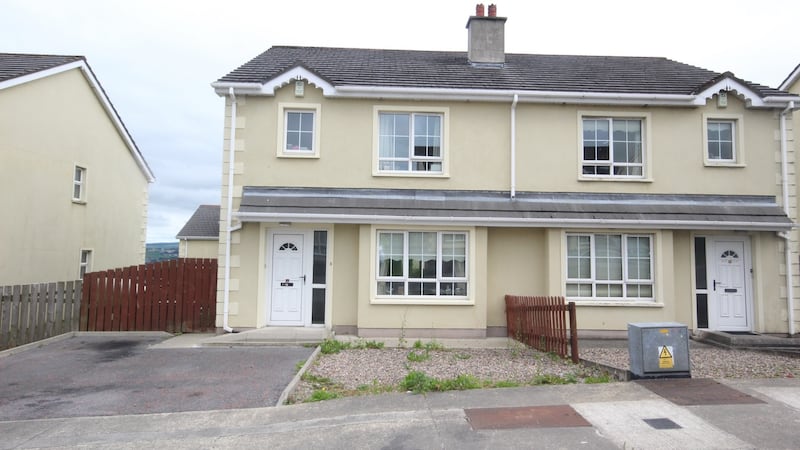
For home buyers, such prices means that even someone on the minimum wage (of about €18,336 a year), will be able to afford to buy their own home in the county, with an income multiple of 3.5 times salary giving them a mortgage valuation of about €64,176. Add on 10 per cent to this, and you’re looking at a purchase price of about €70,593. According to myhome.ie, a two bed terrace house is currently on the market for about €75,000 in Ballymahon, while a three-bed semi-d can be purchased for €89,000 in Longford town.
And it’s not the only county where a single person on the minimum wage can purchase; the same is also true of Roscommon, while in Donegal, Kerry, Cavan, Leitrim and Sligo, the typical house can be purchased by a single person on a salary of less than €30,000 a year.
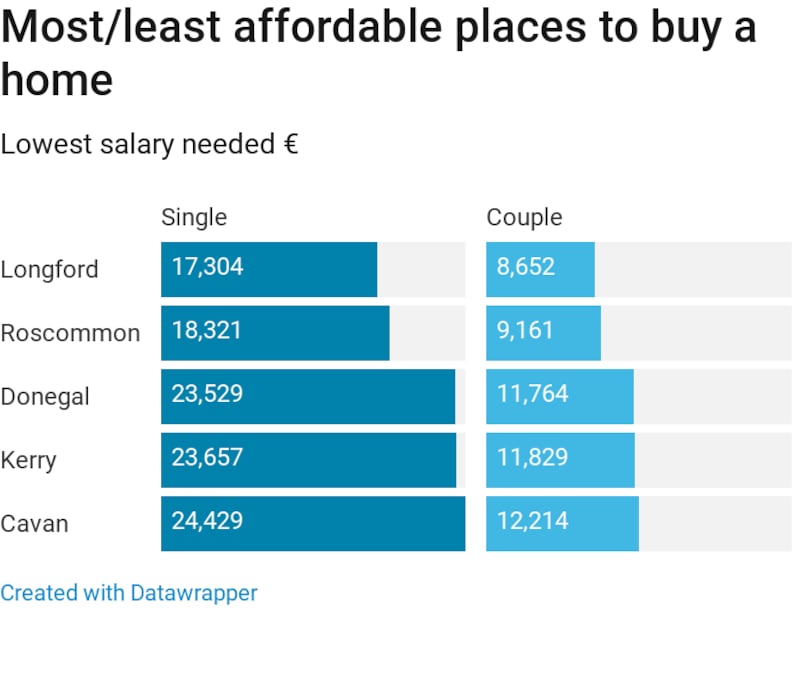
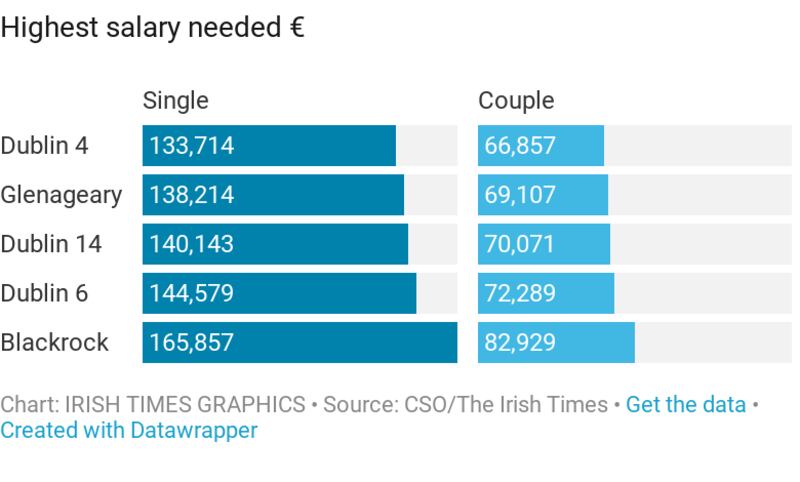
[ click here ]
The “premium” areas
They’re the country’s most expensive places to buy a home; and they’re all on the southside of Dublin. Yes the areas of Blackrock, Glenageary, Ranelagh, Rathgar, Donnybrook and Clonskeagh may have had mixed fortunes during the downturn, but the boom, while not quite back completely, has seen prices continue to rocket.
Back in January 2012 for example, median prices in the south Dublin seaside suburb of Blackrock, hit a low of €327,000. This means that someone earning €84,085, on their own or as a couple, could have afforded to buy the typical home in the area at the time; fast forward to March 2018 however, and median prices have soared to €645,000. This means that the salary you will need to buy the typical house in the area has practically doubled, to €165,857, unless you can get an exemption from the Central Bank rules, to qualify for a higher mortgage based on your income. And of course while house price growth has been rapid, earnings growth has been very subdued over this period until a recent uptick.
Outside of Dublin, it’s the commuter counties that require the biggest salaries to buy a house; in Wicklow for example, you’ll need about €75,000, or €68,000 in Kildare.
In the middle
According to our survey, Balbriggan, in north county Dublin, is the most affordable locale in the capital – but it will still be beyond the reach of many people who are buying on their own. For example, a salary of €54,514 is needed to purchase here, based on a median purchase price in March 2018 of €212,000. This means a couple, on salaries of €27,527 each, can afford to buy the typical house here, provided that they can save a deposit of about €21,000. It’s followed by Dublin 11 (salary of €59,143 required), which has been described as “the most undervalued postcode” in the city, and is home to Finglas and Ballymun, and Dublin 17, where you’ll need a salary of about €60,171.
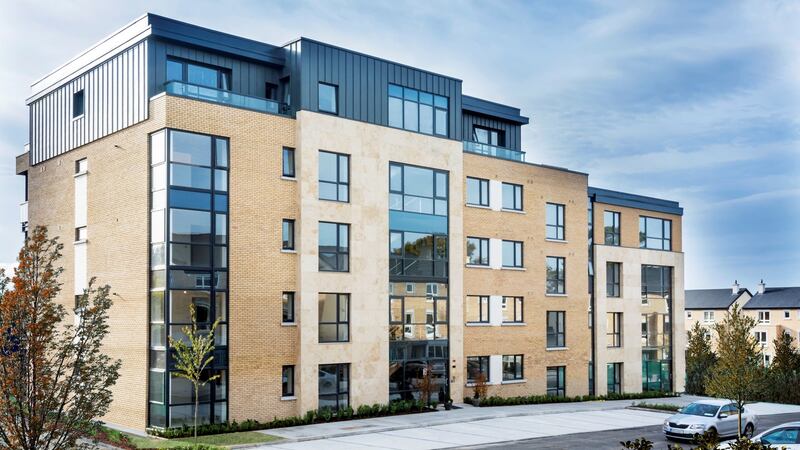
Elsewhere, counties Galway, Kilkenny and Cork require annual salaries of between about €47,500 and €50,000 to buy the typical property in those areas.
Below is a full breakdown of the median prices of houses around Ireland and the salaries needed, followed by the numbers for Dublin.
